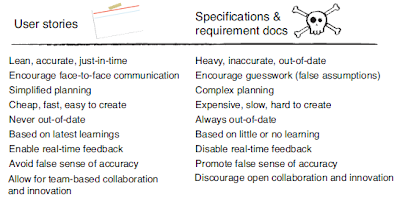Last Wednesday (Feb 20th), I presented at 33th Test Birthday Event in Sao Paulo! It was very cool! A great experience for me...
There's a long story behind, that I should tell you:
I was looking for a first event to start talking, to be more active on this! And then, few weeks ago, a friend of mine (Camilo Ribeiro - QA Consultant and blogger at Bug Bang Blog) told me about this event (33th Test Birthday) and I got interested in go and present something. As I didn't have enough time to prepare my own presentation, he suggested me to use the slides that some ThoughtWorkers presented in another event - Como Mariana se tornou uma Agile Tester.
So I sent this one as a proposal, and Camilo submitted a presentation about Lessons learned with Performance Tests.
Last week we received the list with the talks approved, and I was not included on that... Never mind (I thought!), I'll have more opportunities and even more time to prepare my own presentation and to prepare myself to present!
But things changed on the last Monday night, when Camilo sent me an email telling that one of the most expected talk of the event had been cancelled and the organizer was asking to include me instead
 . I got surprised with the huge responsibility that I was assuming by saying ok for that, because I was not preparing myself, and my lack of experience with Waterfall model (and Agile as well!) would made my life hard to compare both models clearly and detailed, following the content of the slides, or talk some bullshit and would not be able to explain! hehehe
. I got surprised with the huge responsibility that I was assuming by saying ok for that, because I was not preparing myself, and my lack of experience with Waterfall model (and Agile as well!) would made my life hard to compare both models clearly and detailed, following the content of the slides, or talk some bullshit and would not be able to explain! hehehe Then, I asked Camilo to pair with me, to help me with the waterfall part of the presentation, so that I would be more comfortable to present. Another fear was about our synchronization with the slides, considering that we didn't have time to present together in advance. We were supposed to have an online audience and we had to be synchronized for a clearly understanding.
Anyway, despite all these challenges and fears, we presented for 50 people (online and face audience). It was cool because, even we hadn't tried to present together in advance, we could synchronize the presentation very well, complementing the thoughts of each one when necessary. After the presentation, people came up with some questions related to how to use Agile in distributed teams (teams splited in more than one country, challenges with timezone etc) and also how to make developers more concerned with testing and quality. In both questions we could share our experience at ThoughtWorks, working in projects with distributed teams (San Francisco - Porto Alegre, India - Sao Paulo - Porto Alegre and Sao Paulo - Porto Alegre).
People got interested about ThoughtWorks and gave us a nice feedback about the format of the presentation (according to them, very different from what they're used to see in other events).
Very proud of my first experience in a big event and looking forward to present in Agile Brazil this year!











